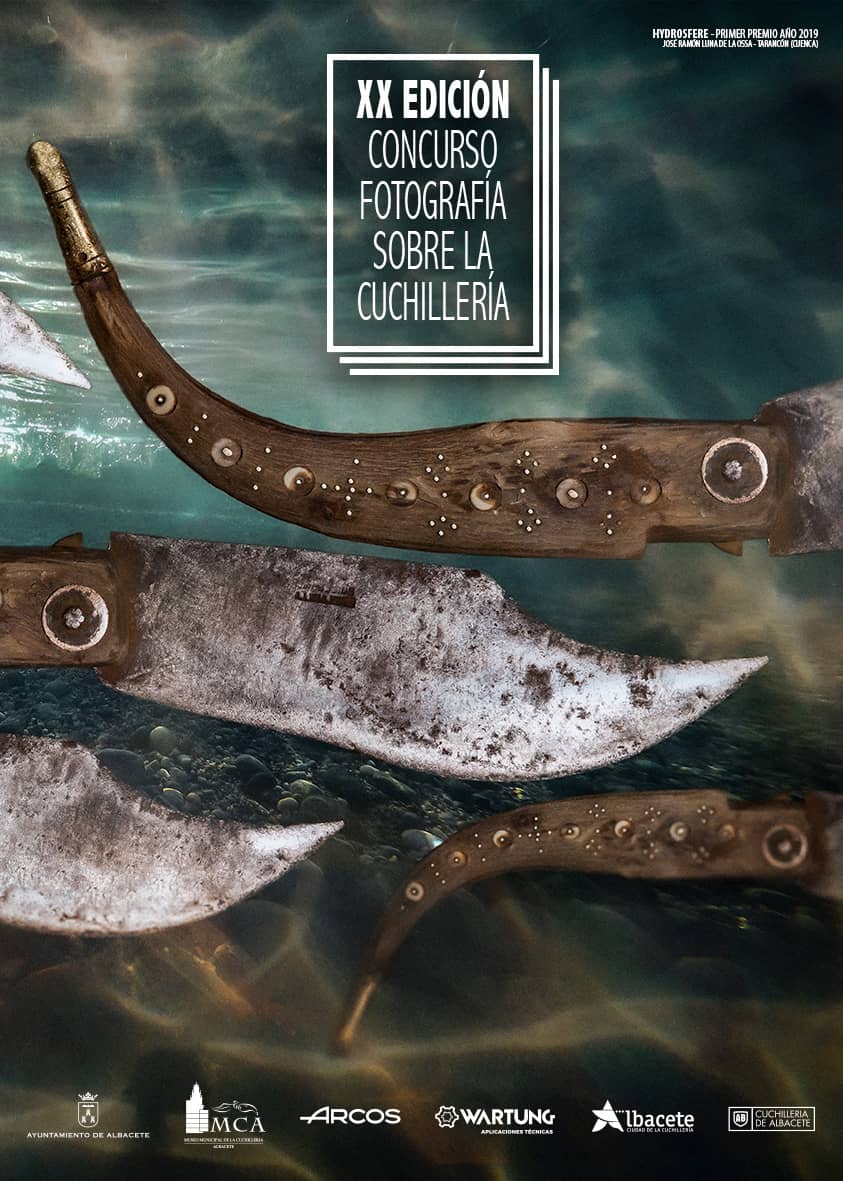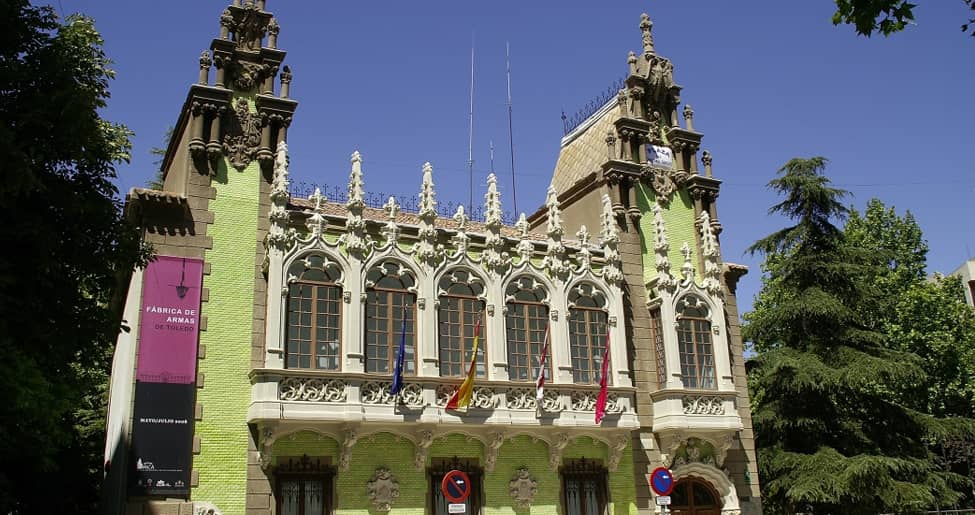Museo Municipal de la Cuchillería Albacete
Explore Albacete's rich legacy of blade craftsmanship at this museum, showcasing centuries of knife-making history and artistry.

Highlights
Must-see attractions

Social
From TikTok & Reddit
Best Time
Fewer crowds, better viewing
Museo Municipal de la Cuchillería Albacete
Best Time
Fewer crowds, better viewing

Highlights
Must-see attractions
Explore Albacete's rich legacy of blade craftsmanship at this museum, showcasing centuries of knife-making history and artistry.
"A fascinating dive into the history of knives and knife making from the town of Albercete."
⏳ Check for Events
The museum hosts workshops & tastings. Check their schedule for unique experiences!
🗣️ Language Support
Commentary may be primarily in Spanish. Consider a translation app for deeper understanding.
Highlights
Discover the most iconic attractions and experiences

Extensive Knife Collection
Main exhibition halls
Explore a vast array of knives from Spain and Europe, showcasing diverse designs and historical significance.

Historical Craftsmanship
Dedicated historical sections
Discover the evolution of knife-making in Albacete and its impact on the region's economy and culture.

Artisan Tools and Machines
Specialized displays
See the intricate tools and machinery used by master cutlers throughout history.
Plans like a pro.
Thinks like you
Planning Your Visit
Timing Your Visit
Beyond the Blades
Best Times
Insider Tips
from TikTok, Instagram & Reddit
⏳ Check for Events
The museum hosts workshops & tastings. Check their schedule for unique experiences!
🗣️ Language Support
Commentary may be primarily in Spanish. Consider a translation app for deeper understanding.
🛍️ Gift Shop Finds
Don't miss the gift shop for unique souvenirs related to local craftsmanship.
🚶♀️ Explore Beyond Knives
Discover exhibits on other local crafts, like shoe-making machinery.
Tips
from all over the internet
⏳ Check for Events
The museum hosts workshops & tastings. Check their schedule for unique experiences!
🗣️ Language Support
Commentary may be primarily in Spanish. Consider a translation app for deeper understanding.
🛍️ Gift Shop Finds
Don't miss the gift shop for unique souvenirs related to local craftsmanship.
🚶♀️ Explore Beyond Knives
Discover exhibits on other local crafts, like shoe-making machinery.
What Travellers Say
Reviews Summary
Visitors find the Museo Municipal de la Cuchillería to be a surprisingly interesting and educational experience, highlighting the significant history of knife-making in Albacete. The extensive collection and historical context are frequently praised, though some note the lack of English commentary. Overall, it's considered a worthwhile visit for its unique focus and well-presented exhibits.
"Very interesting. Hadn’t had the slightest idea how significant the folding knife making business was.
The knife collection itself is very big. Both in types, geographic sample and sizes.
It would be good to have an English version of the commentary available."
Andrzej Kaczmarczyk
"It was quite an interesting dive to history. I highly recommend visiting."
Jevgeni Lisovoi
"Very interesting. Large selection of machines used in shoe making. Great displays of shoes as produced for famous people and novelties"
Barry Weston
What People Like
What People Dislike
Frequently Asked Questions
🚇 🗺️ Getting There
The museum is centrally located in Albacete, making it easily accessible by public transport or on foot if you're staying nearby. Many visitors arrive by bus or train to Albacete and then take a short walk or local bus to the museum.
While street parking might be available, it can be limited in the city center. It's often more convenient to use public transportation or a taxi to reach the museum.
Opening hours can vary, so it's best to check the official museum website or their social media for the most up-to-date information before your visit.
The museum strives to be accessible. It's recommended to contact them directly or check their website for specific details on accessibility features.
Generally, photography for personal use is allowed, but flash photography might be restricted. Always look for signage or ask staff if unsure.
🎫 🎫 Tickets & Entry
Admission fees are typically reasonable. Check the museum's official website for current ticket prices and any potential discounts for students, seniors, or groups.
For general visits, booking in advance is usually not required, but it's a good idea during peak seasons or if you're part of a large group. Special events might require pre-booking.
Guided tours may be offered, especially for groups. Inquire at the museum's reception or check their website for tour schedules and booking information.
Yes, the museum features a gift shop where you can purchase souvenirs, books, and items related to knife-making.
The XX Anniversary celebrated 20 years since the museum's inauguration, honoring those who contributed to its creation and history.
🎫 🧭 Onsite Experience
You'll find an extensive collection of knives from various regions and historical periods, showcasing the evolution of craftsmanship. There are also displays of tools and machinery used in the trade.
Absolutely! The museum provides historical context and visual displays that make the craft accessible and interesting to everyone, even those new to the subject.
The museum features manipulative areas and displays that aim to be engaging. Some exhibits might offer hands-on elements or detailed explanations to enhance understanding.
A visit can range from 1 to 2 hours, depending on your interest level. You might spend more time if you delve into the historical context or enjoy the detailed displays.
Yes, the museum occasionally hosts special events like cooking demonstrations, cheese tastings, and workshops related to gastronomy and craftsmanship.
🍽️ 🍽️ Food & Dining
While the museum itself might not have a full restaurant, Albacete's city center offers numerous cafes and restaurants nearby. You might also find special culinary events hosted at the museum.
Yes, the museum has hosted events like cheese tastings paired with local wines and showcookings featuring renowned chefs.
Albacete is known for its hearty Castilian cuisine. Look for dishes featuring lamb, pork, and local cheeses. The region also produces excellent wines.
📸 📸 Photography
Capture the intricate details of the knives, the historical machinery, and the overall ambiance of the exhibition halls. The unique designs offer many visually interesting shots.
Generally, personal photography is permitted. For commercial use or extensive filming, it's advisable to contact the museum in advance.
A camera with good low-light capabilities is helpful, as some areas might be dimly lit. A macro lens can be useful for capturing the fine details of the knives.
Short videos for personal social media are usually fine. Be mindful of other visitors and avoid disruptive filming.
The displays featuring antique knives, intricate handles, and the large collections of different knife types are often very visually striking.
For Different Travelers
Tailored advice for your travel style
👨👩👧 Families with Kids
To make the visit more enjoyable for younger visitors, consider focusing on the visual aspects of the collection – the different shapes, sizes, and decorative elements of the knives. Discussing the tools and machines used in the past can also spark curiosity. It's a good idea to check if there are any family-friendly events or workshops scheduled during your visit.
📚 History Buffs
Pay close attention to the contextual information that links the industry to the broader social and economic history of the region. Understanding how knife-making influenced Albacete's development and its place in Spanish industrial history will be particularly rewarding. The museum's XX Anniversary celebration also highlights its importance and the efforts made to preserve this heritage.
✈️ Day-Trippers
Plan your visit to coincide with the museum's opening hours and allow at least 1-2 hours to explore the main exhibits. Combine your visit with a stroll through the city center and perhaps a local meal to get a good feel for Albacete in a single day.
Deep Dives
In-depth insights and expert knowledge
The Art and History of Albacete Knives
The museum's exhibits go beyond just displaying finished products. They often feature historical machinery, tools, and workshops, offering a glimpse into the actual production process. This immersive approach allows visitors to understand the labor-intensive nature of knife-making and the ingenuity of the craftsmen. The collection spans various types of knives, including the iconic navaja (folding knife), a symbol of Spanish craftsmanship, as well as knives from different geographical regions, demonstrating the global reach and influence of Albacete's industry.
Beyond the blades themselves, the museum often connects knife-making to the broader socio-economic history of Albacete. It illustrates how this industry shaped the local economy, provided livelihoods, and contributed to the cultural identity of the city. Special events and temporary exhibitions further enrich the visitor experience, often delving into related themes like gastronomy, where the use of knives in culinary arts is explored.
Experiencing the Museum: Tips from Visitors
While the core of the museum is its impressive knife collection, some visitors also note other interesting displays, such as machinery used in related crafts like shoe-making, adding an unexpected dimension to the visit. The staff are often described as helpful, and the presence of a gift shop is a convenient bonus for those looking for souvenirs.
A common piece of advice from visitors is to be aware that the commentary and descriptions might be primarily in Spanish. While the visual displays are compelling, having a translation app or a basic understanding of Spanish can enhance the learning experience. Despite this, the museum is widely recommended as a worthy visit for anyone exploring Albacete.
Social
from TikTok, Instagram & Reddit